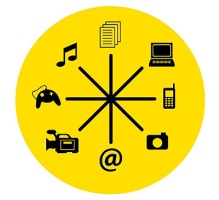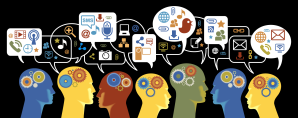This is my evaluation matrix for my second teaching resource, Classroom management.
Click the link below to download the file.
This is my evaluation matrix for my second teaching resource, Classroom management.
Click the link below to download the file.
This is my evaluation matrix for my first teaching resource, Transition Activities for Young Leaners.
Click the link below to download the file.
This is my second digital teaching resource made using scoop.it.
Click the link below to go to my Scoop.it. page on classroom management.
Students’ lives outside of school are filled with digital technology. Many Australians now have access to digital technology. Students are now expecting their education to have digital technology therefore schools are being asked to bridge the digital divide between what parents can afford and what they want their children to experience (Howell, 2012). However not all Australians have access to these resources and this is leading towards a digital divide in rural and metropolitan Australian education.
Click here to view Lateline’s investigation into homeschooling and need for better internet.
As Howell (2012) notes, new generations of students are born into a digital world that is uneven. Some students may not have the same access to technologies as others do and may not have the same understanding of technology. This is called a “digital divide”.
Australia is often regarded as classless but in teaching with ICT Howell (2012 p.n. ____) suggests that “we have very distinct layers based upon socio-economic factors”
The main contributing factors could be:

Little is known about who and how the internet is being used but Howell (2012) states what is most evident is that there is an increasing amount of internet connection in Australian homes.
The students of today are nicknamed “digital natives” and through the launch of mobile technology, are constantly connected to the internet. That being said, students have varied levels of digital experience due to the digital divide. Homes throughout Australia have a broad range of differing technologies and lower socio-economic households are not able to access the same technologies as others (Howell, 2012).
The Ministerial Council for Education, Early Childhood Development and Youth Affairs (2008) conducted an assessment using Year 6 and 10 students from 600 schools.
The assessment measured students’ skills in understanding, manipulating information and team work (Howell, 2012).
The results from the assessment showed that:
Even though students are connected through mobile technology, results such as these could suggest the digital divide continues to be evident and may affect future generations of students and their ability to perform at a national standard level.
Reference:
Jennifer Howell (2013) Teaching with ICT. Oxford University Press Australia Higher Education, 09/2012. VitalBook file.
Nikki Tugwell 2015
Slow internet in regional Australia creating a ‘digital divide’ and harming education and business
http://www.abc.net.au/lateline/content/2015/s4292363.htm
Image
Figure 1
What is transmedia and what does it have to do with educating today’s children? Transmedia is a form storytelling that allows the narrative to expand over different media platforms and continues the story for a long period of time (Johnson, 2013).

This can include:
Transmedia allows the inspiration to engage with other creators, seek out other parts of the story, and contribute to the narrative by adding content (Rutledge, n.d.). This allows fans and followers to have their own imput and expand the universe of their favorite stories.
click here to view a video on transmedia.
Nowadays most people have access to technologies that allow them to manipulate and circulate media content. All of these new technologies could support a mixture of educational techniques (Kalogereas, 2013).
Kalogeras (2013, p. ______) of Business College of Athens argues that: “these self contained parts can be utilized as teaching aids, in conjunction with traditional learning tools, when the context of the material is complementary to the subject matter.”
Herr-Stephenson, Alper, Reilly and Jenkins (2013) suggest that:

As Herr-Stephenson et al. (2013) , suggest transmedia provides a place for students to explore, experiment and contribute to the story as it unfolds over the complex, interconnected and dynamic world of different media platforms.
It forces students to use different types of media literacy skills to retell media (Herr- Stephenson, et al., 2013). If executed correctly, transmedia can allow an immersive, responsive, student-centered learning environment full of information related to students’ existing knowledge.
Reference:
Derek Johnson (2013) A history of transmedia entertainment
Retrieved from
http://spreadablemedia.org/essays/johnson/#.VhN2vM7iT8G
Pamela Rutledge (n.d.) What is transmedia storytelling?
Retrieved from:
http://athinklab.com/transmedia-storytelling/what-is-transmedia-storytelling/
Stavroula Kalogeras, (2013)
Media-Education Convergence: Applying Transmedia Storytelling Edutainment in E-Learning Environments
Becky Herr-Stephenson and Meryl Alper with Erin Reilly and introduction by Henry Jenkins (2013)
T is for Transmedia: Learning through Transmedia Play
Image reference:
Krishna Stott 02.14.14
http://www.provideocoalition.com/how-to-recognise-a-modern-transmedia-audience
Our lives are becoming digitized because of digital technology. Digital technology is used at work, at home and in school. The use and teaching of digital technology in the classroom is now a requirement in order to prepare students for our digitized society (Howell, 2012). Click here for a look at what our digital world could look like in the near future

Our world is becoming a place were our everyday lives rely heavily on the use of digital technology. The Australian Bureau of Statistics (2015) reports in 2015 more then 12 million Australians are now connected to the internet. If you walked through most homes, businesses and schools you would find digital technology. Prensky (2008) states that new generations of people have embraced the use of digital technology. In the school environment students are constantly seeking to digital technology to enhance their learning
Howell (2012) indicates that digital technology has made vast advancements in past years and has been embraced by the youth. With the introduction of smart phones, tablets, computers and video games, today’s students are experiencing digital technologies in their homes at a younger age. Students’ home and private lives are full of digital technology (Howell, 2012).
Students find digital technology engaging and now expect teachers to use it in the classroom. Howell (2012) notes that students have embraced digital technology and are now required to know basic skills at a young age. Teachers must now be responsible for using various technologies in the classroom in order to teach their students the skills required to enter the workforce and for their future lives. I wonder what will happen to future generations of workers as they enter jobs that require this new level of digital fluency?
Reference:
Jennifer Howell, 2013. Teaching with ICT.
Oxford University Press Australia Higher Education, 09/2012. VitalBook file.
Video
Advexon (2014) The Future Technology. What are you expecting from The Future Technologies?
Retrieved from
Marc Prensky (2008) The 21st – Century digital learner
Retrieved from
http://www.edutopia.org/ikid-digital-learner-technology-2008
Australian Bureau of Statistics (2015)
Retrieved from
http://www.abs.gov.au/ausstats/abs@.nsf/mf/8153.0/
Image
Australian Bureau of Statistics (2015)